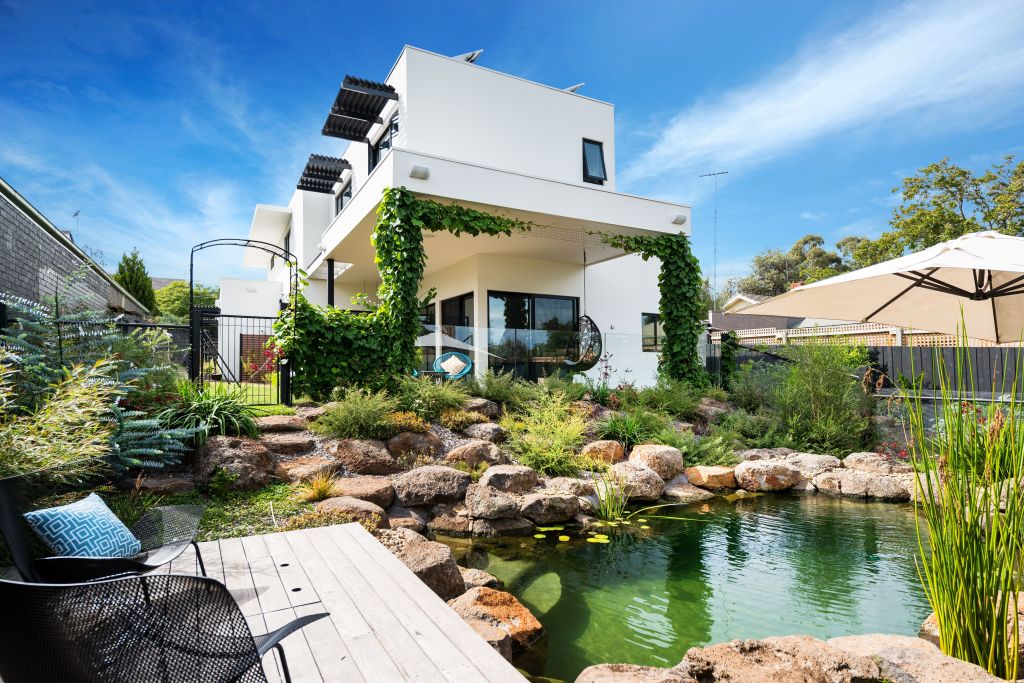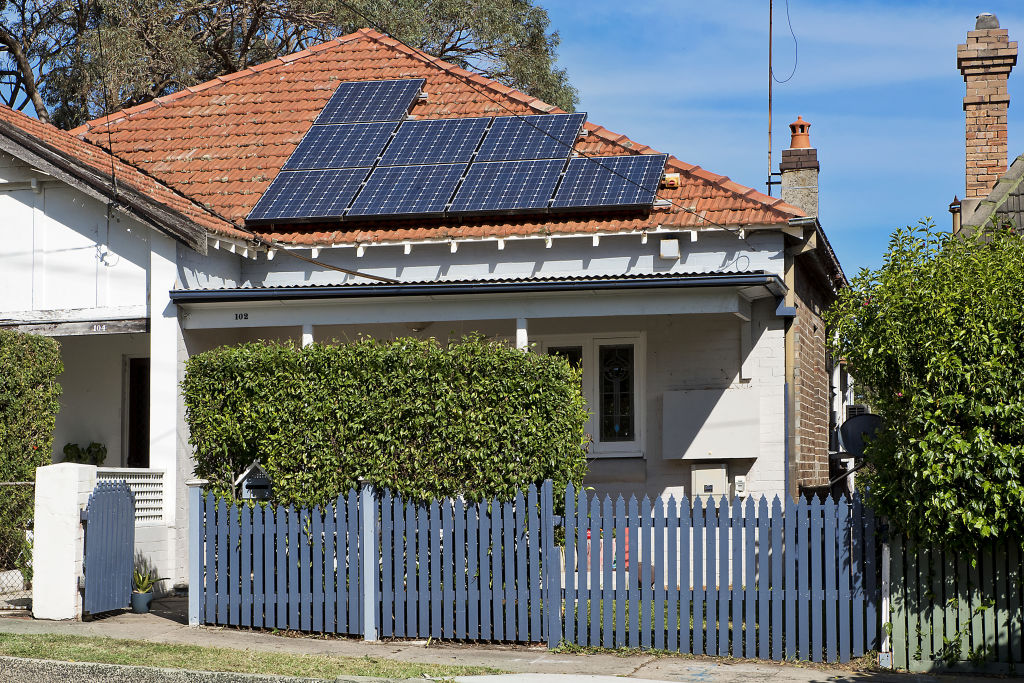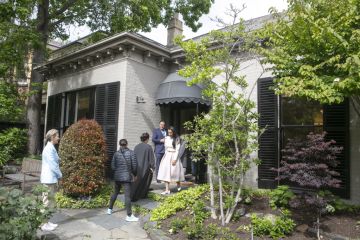Four myths busted about creating a sustainable home
Climate change and sustianble living have dominated headlines this year and, as more Australians show an interest in living a more eco-friendly lifestyle, our homes offer a good place to start making impactful changes.
But as the sustainability movement grows, so do the misconceptions around it. This week on Your Domain, we ask the experts to debunk the common myths of sustainable living.
It doesn’t need to be quirky
A sustainable home doesn’t need to be built from a shipping container or rammed earth.

Frances Cosway and partner Neil Dicker have experienced first-hand the cost savings building a sustainable house can have. Their Hampton home, named “White Pebble House”, boasts a 7.3 star energy rating.
While an average Victorian house with four residents uses 15,000 kilowatt hours of electricity per year, Cosway and Dicker’s home uses just a third of that and saves them around $2500 a year on electricity – the equivalent of removing three cars a year from the road.
One of the reasons Cosway and Dicker wanted to build their house was to debunk the misconception of what a sustainable home looks like.
“[We wanted] to hit the notion on the head that if you build a sustainable home, that it has to be made out of recycled tyres and mud bricks. So it was really to say you can build a ‘conventional’ looking home and still have it working really hard for you from an energy saving perspective,” said Cosway.
It doesn’t need to be expensive
Andrew Reddaway, an energy analyst at sustainable advocacy firm Renew, says while adding sustainable elements to your home can vary in costs, there are cheap fixes that most people can implement.
“There’s the old saying – reduce, reuse, recycle – so you can do that without any upfront costs at all,” he said.
“Just reduce the amount of stuff that you’re buying, reduce the amount of energy and water that you use, recycling, composting – all of those things are great. And there’s a couple of other things like if you’ve got a reverse-cycle airconditioner, then you can use that for heating instead of gas. That’s a more efficient way to do it.”

“Cheap quick fixes like draught-sealing pays off extremely quickly. Some of the others may take longer, so it’s about prioritising where you put your money into,” he said.
If you’re building a home from scratch, Cosway and Dicker say choosing the right orientation to make the most of the sun will cost you nothing and save you money in the long-run.
“We’ve orientated all of our living areas towards the north and we’ve faced our windows towards the north and positioned the eaves so that the winter sun can shine in and hit the floor of those north-facing rooms and warm it up during the day,” said Dicker.
You don’t need to make changes all at once
Not everybody has the funds or the ability to start building a sustainable home from the ground up. Adding sustainable elements to your home can be a gradual process.
“There are ways to stage your build so that you can incrementally implement sustainable solutions over time,” said Dicker.
“You can spread the cost over time so obviously insulation in the walls, that kind of needs to go in first, but the rain tanks and the solar panels, they can go later if your budget doesn’t allow it.”
What might leave you out of pocket initially will pay off in the future, and Reddaway encourages those interested in making changes to think about what will pay itself off the fastest. For him, solar panels tick this box.
“They pay themselves back within four to seven years in most parts of the country.”
If you’re not ready to install a rainwater tank, using grey water from the laundry or showers can be done instead.
Small adjustments make a big difference
“Sealing up little cracks and gaps around windows and doors – that’s very cost-effective [and] very easy to do as a do-it-yourself job. [You] can actually make a big difference when you don’t have those draughts coming through,” said Reddaway.
He also recommends replacing halogen down lights with LED ones, as a single one can accumulate as much energy as a fridge.
For Cosway and Dicker, simple changes to the floor plan like adding in more doors has had a big impact on their home.
“So that you can flick a switch and you’re not heating or cooling the entire house, that you’re able to zone areas that you can stay in and then just heat and cool those areas,” said Cosway.
The couple selected porcelain-made timber tiles instead of standard timber floorboards, so that the sun naturally warms up the porcelain, keeping the floors heated throughout winter without using energy.
Another idea Cosway and Dicker have implemented is the “winter room” – a room the family spends time in during the cooler months. The room is sealed off and heated selectively, so that they’re not heating an entire house. It naturally gets plenty of winter sun, which also heats the room naturally.
“So we all pile in here in winter, the kids play games on the floor, the piano gets played, the guitar gets played – so I suppose it’s our music, reading, sort-of second living. It’s just a really nice cosy room because we can close the door and it’s not open living,” said Cosway.
Your Domain airs at 10am on Saturdays on Nine. Catch up on all episodes on 9Now.
We recommend
We thought you might like
States
Capital Cities
Capital Cities - Rentals
Popular Areas
Allhomes
More







